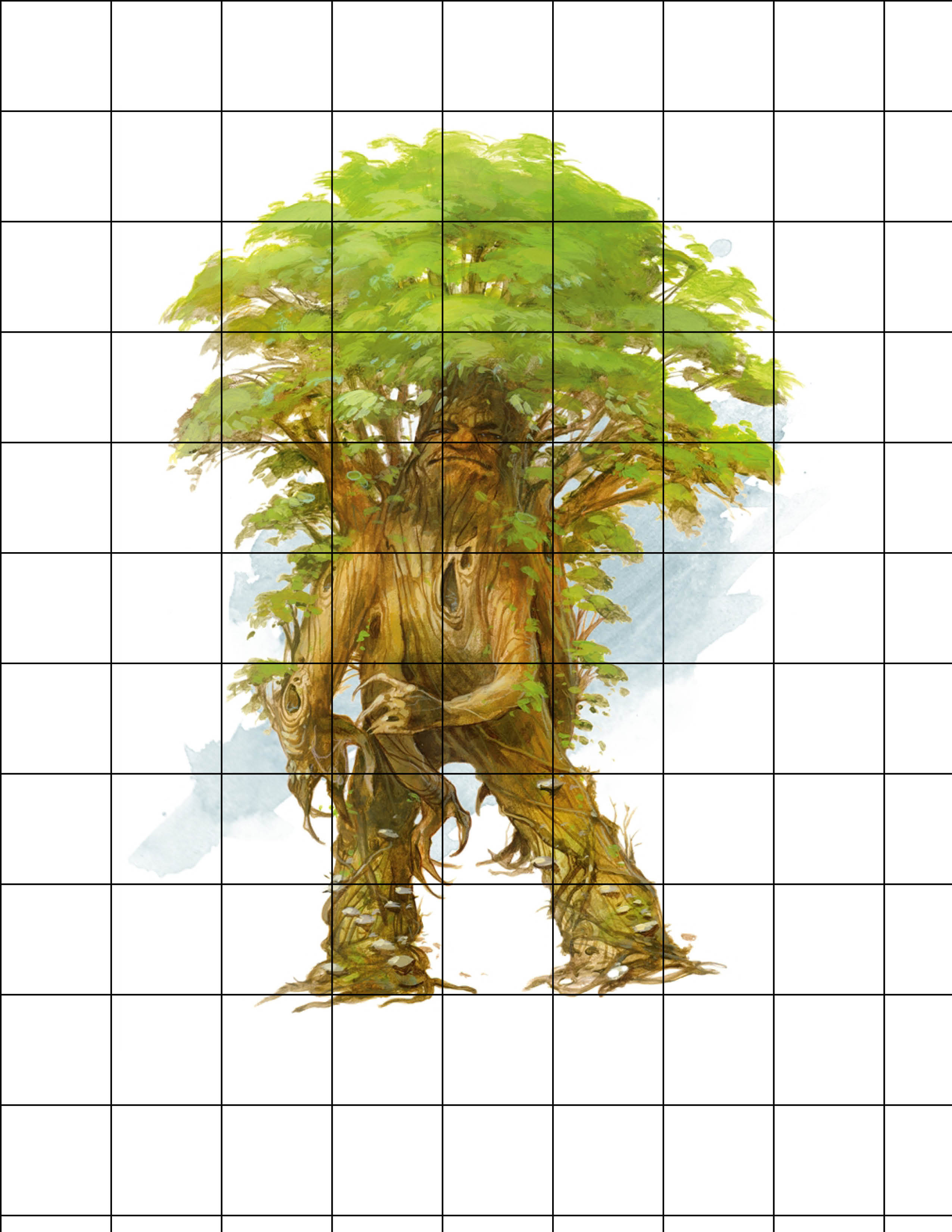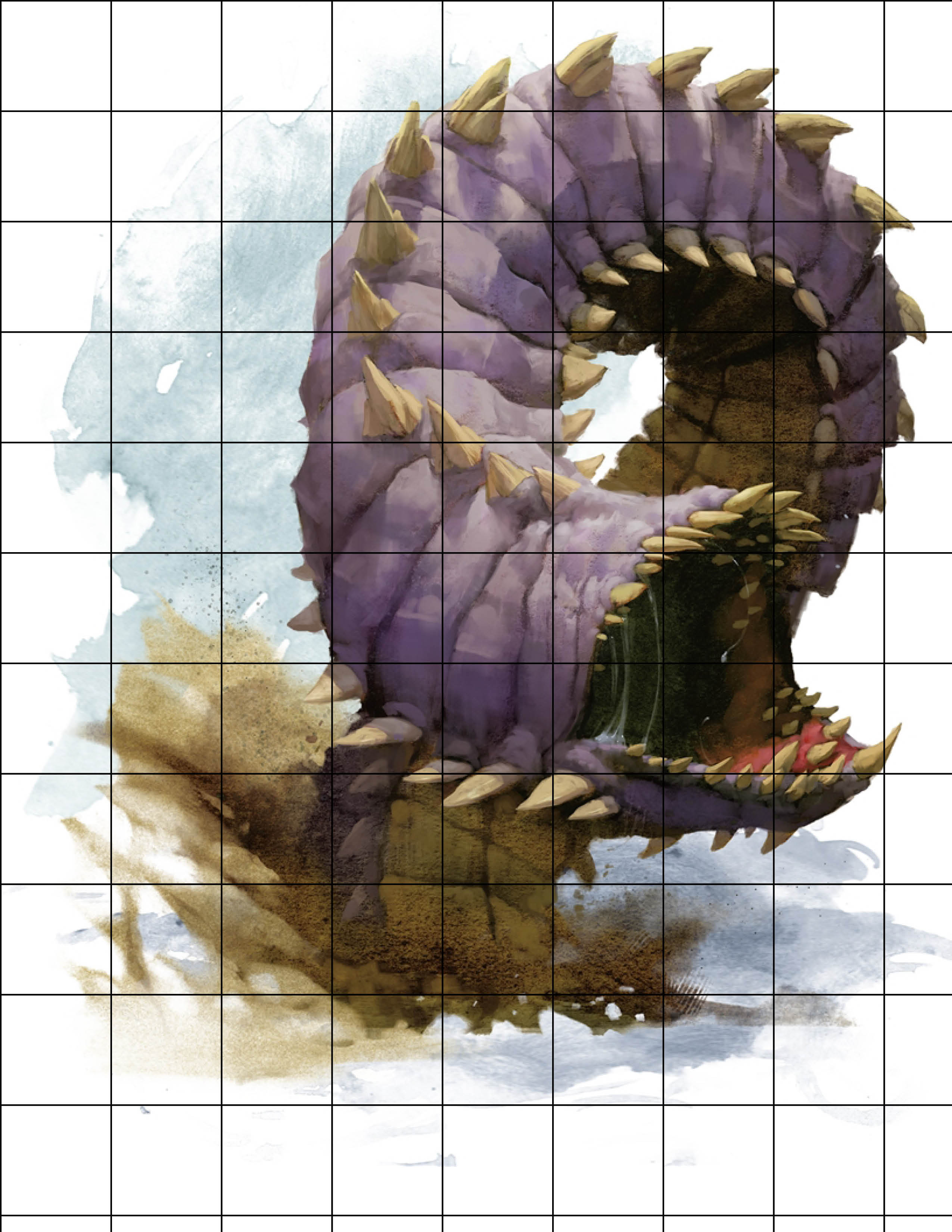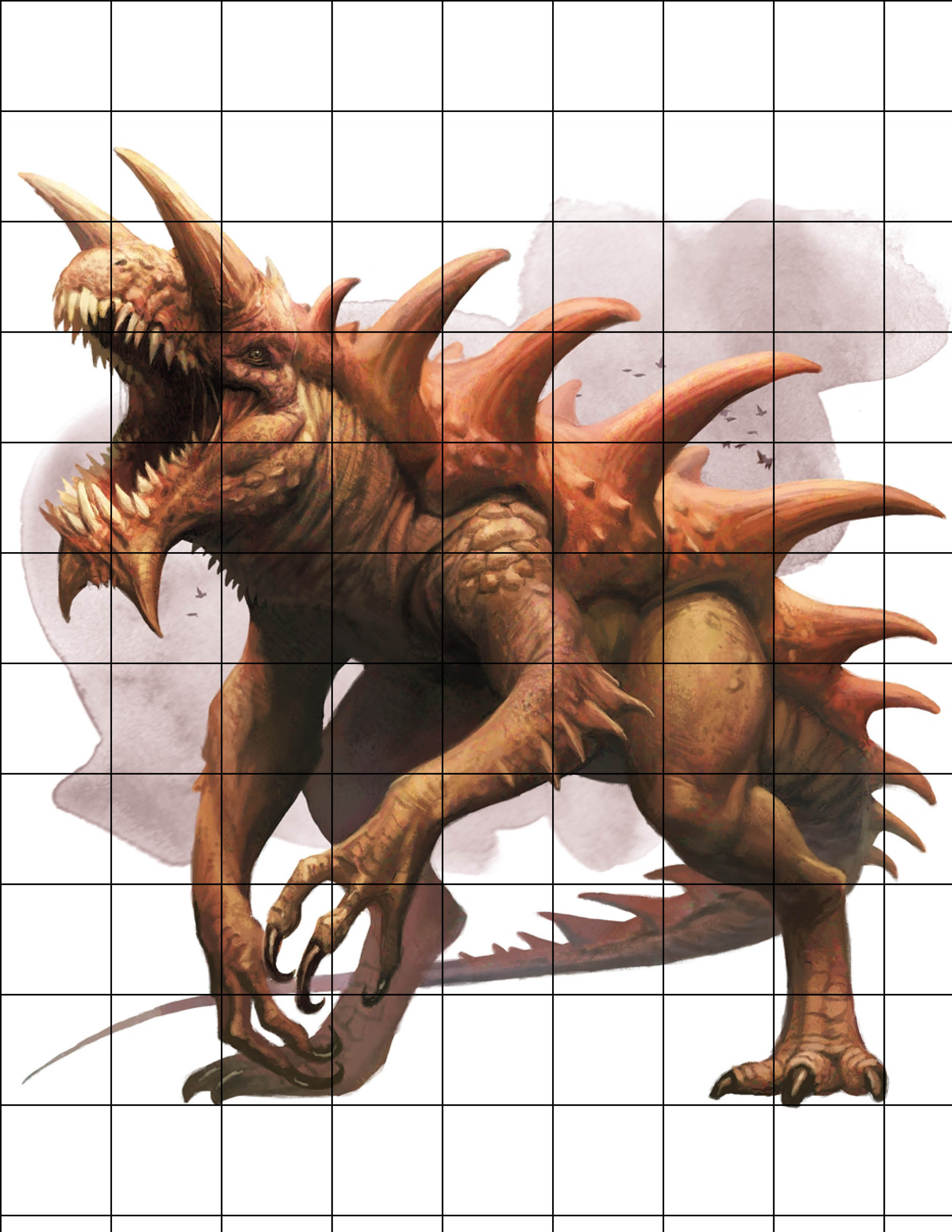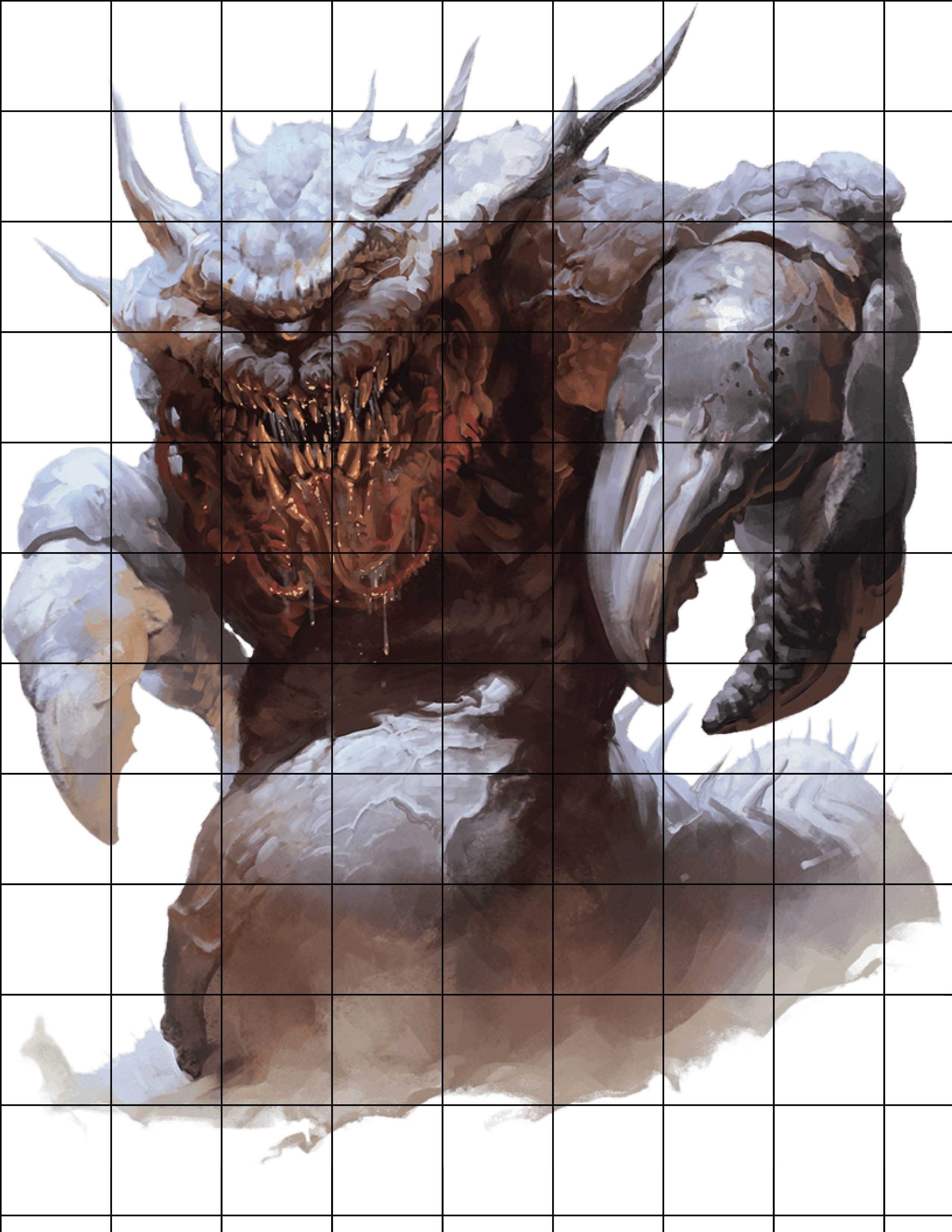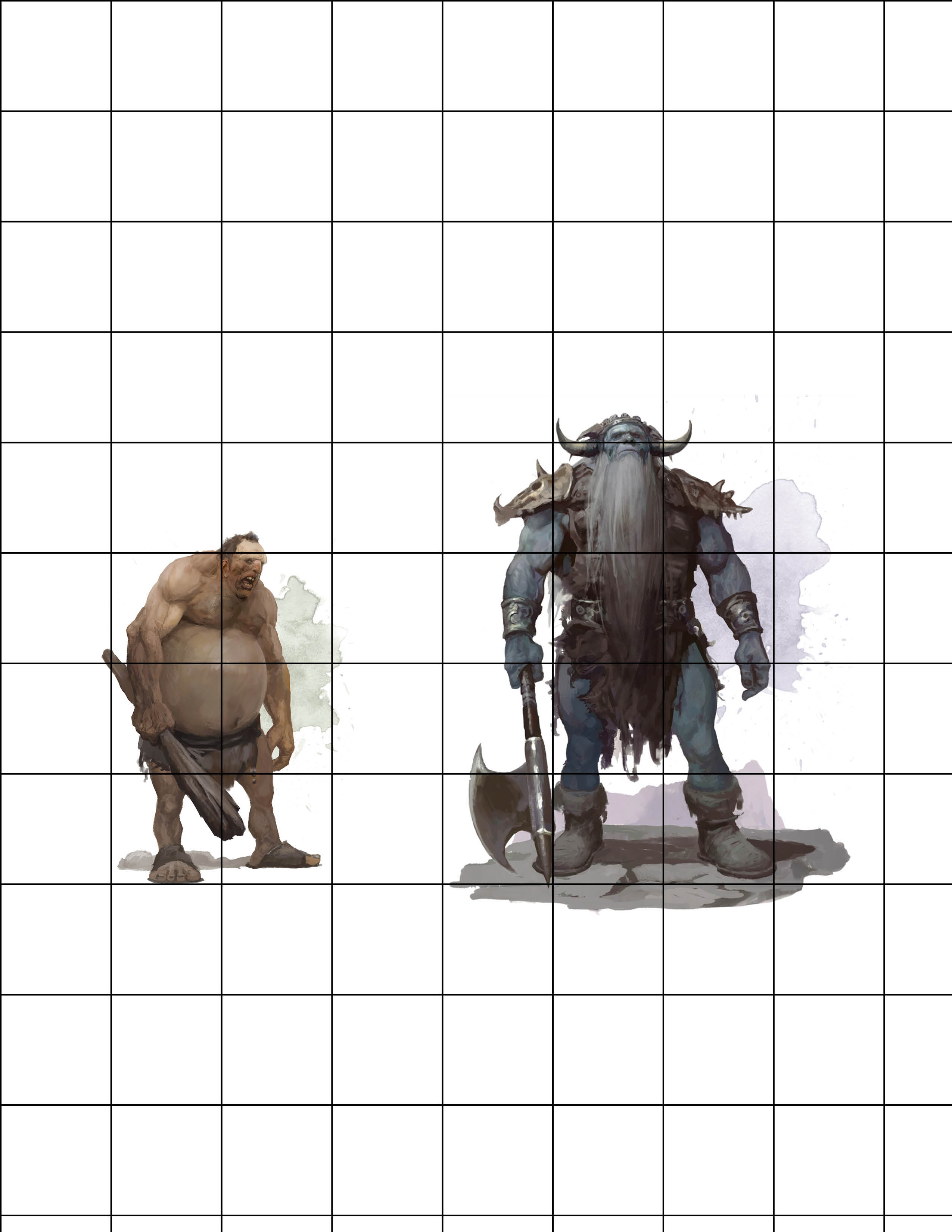Fighting Against the Colossal
when fighting massive creatures, pop culture depicts them as the colossal monsters whose footsteps can topple towers, rip trees from the mountain tops, and seemingly ignore hundreds and thousands of arrows shot into them.
Unfortunately, these mighty beasts can be brought low if you just have enough house cats to swarm them, their claws dealing a single point of damage, which can bring low even a mighty ancient red dragon, you need enough sacrificial house cats - 10,920 to be exact.
What Are Colossals?
Colossals can be any monster that the DM wishes to turn into a more exciting battle. A low level party attempting to kill a giant might use these rules to turn the fight into a greater cinematic experience, or a massive tarrasque could be storming a city, thus explaining why the thousand guards are unable to put an end to the beast with their feeble crossbows, even with clerics blessing their shots.
Not every monster should be considered suitable for these Colossal rules, especially if the party has fought and killed many of the same monsters in the past. Typically, a colossal is a creature of a higher CR compared to the party and is as much a hazard to the world as a hazard to the party.
Damage Reduction
Damage Reduction allows a creature to reduce the damage it takes by a certain amount, this amount is determined by the difference in size between the attacking creature and the colossal creature.
Two Size Categories Larger
If a colossal creature is two sizes larger than the attacking creature, they gain Damage Reduction equal to half their CR to all attacks made against them.
Three Size Categories Larger
If a colossal is three size categories larger or more than the attacking creature, they gain Damage Reduction equal to their CR to all attacks made against them.
Category Chart
| Your Size | Reduction Equal to Half CR |
Reduction Equal to CR |
|---|---|---|
| Tiny | Medium | Large |
| Small | Large | Huge |
| Medium | Huge | Gargantuan |
| Large | Gargantuan | - |
| Huge | - | - |
| Gargantuan | - | - |
Climbing the Colossal
By climbing on top of a colossal, you can affect the creature in different ways depending on where you are. There are three categories to decide where you are when you climb on a creature. It is assumed that you first climb onto a creature by first moving on to its legs, as they are typically the only parts connected to the ground. You can then move from the legs to the body, and from the body to the head.
While a smaller creature has climbed onto a larger creature, the smaller creature moves with the target and has advantage on attack rolls.
Making the Climb
A smaller creature that is two sizes smaller than a larger creature can attempt to begin climbing the larger creature. The smaller creature can attempt to make a special Attack action to make a Strength (Athletics) or Dexterity (Acrobatics) check contested by the target's Dexterity (Acrobatics) check. If it wins the contest, the smaller creature successfully moves into the creature's space and is clinging on to the larger creature's body. If you are able to make multiple attacks with the Attack action, this attack replaces one of them.
The smaller creature can move around within the larger creature's space, treating the space as difficult terrain. It is assumed that the smaller creature first grabs onto the larger creature's legs but the DM may rule otherwise depending on any special circumstances. The larger creature's ability to attack the smaller creature depends on the smaller creature's location, and is left to the DM's discretion. The larger creature can dislodge the smaller creature as a special Attack action - knocking it off, scraping it against wall, or grabbing and throwing it - by making a Strength (Athletics) check contested by the smaller creature's Strength (Athletics) or Dexterity (Acrobatics) check. The smaller creature chooses which ability to use. If the creature is able able to make multiple attacks with the Attack action, this attack replaces one of them.
Climbing Higher
If the smaller creature wishes to climb higher up the creature to the next section of its body, like from the legs to the body, they must repeat the special Attack action they used to climb onto the colossal. On a success, they can use their movement to climb up the larger creature to the next section of its body. On a failure, they are knocked off and fall to the ground, suffering falling damage if they were 10 feet or more off the ground.
The DM may decide, based on the arrangement of the larger creature, that a smaller creature can climb from the legs to the head, or can climb on to the head first.
Descending
When descending from a larger creature, the smaller creature can choose to climb down safely, repeating the steps for climbing up a creature, or they can choose to fall and try to catch themselves. They repeat the same special Attack action as if they were climbing up the creature, but if they decide to fall, they have disadvantage when making their check. On a success they can grab on to the larger creature to any spot that is below them, this movement allows them to move faster as they do not have to use their movement to fall. On a failed check, they plummet to the ground and take falling damage based on how far they fell.
Teleporting and Flight
If a creature wishes to teleport or fly up to the top of a creature and grab on, they must still take the special Attack action in order to cling to the colossal. If they fail the check, they fall to the ground unless they have some way of keeping themselves aloft. The DM may decide that there are certain spots on a colossal creature that don't require the check, but most creatures are in constant motion and those circumstances would be very rare.
Legs
While a creature is clinging to a colossal's legs, the smaller creature can attempt to make a special Attack action to slice at the muscles in the creature's legs. When the smaller creature makes an attack and is successful against the AC of the creature, they roll damage and if they would deal damage, they can choose to instead decrease the creature's movement speed with their legs by 5 feet instead of dealing damage. If you are able to make multiple attacks with the Attack action, this attack replaces one of them.
The larger creature's movement is divided equally between the number of its legs. You can reduce a single leg's movement up to the maximum of that leg's movement. A creature, whose movement is reduced to 0 must either change how it moves or is knocked prone and can only move by crawling until it is healed. You can climb on to the head or body of a creature that is prone if you are on the ground.
While the smaller creature has climbed onto the legs, it can climb up to the body.
Body
The smaller creature treats the colossal as if it is one size smaller for the purposes of Damage Reduction. While the smaller creature is on the body, it can climb up to the head or down to the legs.
Head
A smaller creature clinging to a colossal's head can attempt to make a special Attack action to maim the colossal. When a smaller creature makes an attack, it can instead target a sensory organ that provides information to the larger creature so long as it is within reach. If they make a successful attack roll against the AC of the larger creature, they can deal damage to the sensory organ instead of the colossal. If you're able to make multiple attacks with the Attack action, this attack replaces one of them.
A creature must be on the head of a colossal in order to target the sensory organs, and they can not use an attack that targets an area of effect. While the smaller creature is on the head, it can climb down to the body.
Attacking Sensory Organs
A creature that targets a sensory organ must make a successful attack roll against the AC of the colossal, on a successful, they can deal damage to that sensory organ instead of dealing damage to the colossal. Once an organ is reduced to 0 hit points, that sensory organ no longer works. Some sensory organs have redundancies, like having two eyes or two ears, and requires an attacker to destroy both in order to destroy the sensory organs.
The chart below provides suggestions for the hit points of sensory organs. Each lot of hit points represents a single part of the sensory organ, so if a colossal has three eyes, each eye has the amount of hit points listed below. Certain colossal have an incredible amount of redundancies in their sensory organs that make targeting pointless, like the eight legs of a spider or the thousand eyes of an ancient elder evil.
The DM may decide that a sensory organ is not destroyed at 0 hit points and that if the creature receives magical healing, the sensory organ's hit points can be restored. This does not heal the colossal, only the sensory organ's hit points. A regenerate spell immediately restores all sensory organs.
Sensory organs do not gain any form of damage reduction unless the DM determines that there is something unique about them that would grant them that reduction, like armored eyelids or it's bones are made out of a strange substance that dissuades normal attacks.
Sensory Organ Chart
| Colossal CR | Eye | Ear | Nose | Feelers / Tentacles |
Jaw / Beak |
Trunk |
|---|---|---|---|---|---|---|
| 0-4 | 5 | 5 | 10 | 10 | 15 | 15 |
| 5-9 | 10 | 10 | 15 | 15 | 20 | 20 |
| 10-14 | 15 | 15 | 20 | 20 | 25 | 25 |
| 15-19 | 20 | 20 | 25 | 25 | 30 | 30 |
| 20+ | 25 | 25 | 30 | 30 | 35 | 35 |
Destroyed Sensory Organs
Destroying one of the sensory organs above might have one of the following effects on a colossal, or the DM may decide on something else might be more appropriate.
- Eyes. The colossal is blinded.
- Ear. The colossal is deafened.
- Nose. The colossal can't smell for the purpose of perception checks.
- Feelers / Tentacles. Eyestalks, tentacles and more are destroyed. This could have a variety of effects from blinding a creature to removing a way for them to attack.
- Jaw / Beak. This might provide disadvantage on any attacks made with a mouth, or destroy it all together depending on the colossal and it's anatomy.
- Trunk. This might provide disadvantage on any attacks made with a trunk, or destroy it all together depending on the colossal and it's anatomy.
Siege Monsters & Weapons
Siege equipment and monsters can more easily destroy a colossal monster. Siege weapons and creatures with the Siege Monster trait treat a colossal creature as one size smaller for the purposes of Damage Reduction.
Colossal Monsters
The chart below provides rough guidelines for creatures that could be used as a colossal encounter. This chart provides the height of the legs, the body, and the head. This can be helpful for determining how much movement a character must spend to climb onto the monster as well as to move up to the head of a creature.
Colossal Monster Sizes
| Monster | Size | CR | Leg Height | Body Height | Head Height | Total |
|---|---|---|---|---|---|---|
| Astral Dreadnought*^ | Gargantuan | 21 | - | 15' | 15' | 30'+ |
| Behir^ | Huge | 11 | 5' | 5' | 15' | 20' |
| Brontosaurus* | Gargantuan | 5 | 10' | 10' | 10' | 20'+ |
| Cyclops | Huge | 6 | 7' | 7' | 2' | 16' |
| Dragon, Adult* | Huge | 13+ | 10' | 10' | 10' | 25' |
| Dragon, Ancient* | Gargantuan | 20+ | 15' | 15' | 15' | 35' |
| Dragon, Turtle* | Gargantuan | 17 | 10' | 10' | 5' | 20' |
| Empyrean | Huge | 23 | 14' | 14' | 2' | 30' |
| Giant, Cloud | Huge | 9 | 11' | 11' | 2' | 24' |
| Giant, Fire | Huge | 9 | 8' | 8' | 2' | 18' |
| Giant, Frost | Huge | 8 | 9' | 9' | 3' | 21' |
| Giant, Hill | Huge | 5 | 7' | 7' | 2' | 16' |
| Giant, Stone | Huge | 7 | 8' | 8' | 2' | 18' |
| Giant, Storm | Huge | 13 | 12' | 12' | 2' | 26' |
| Hydra* | Huge | 8 | 10' | 10' | 10' | 25' |
| Kraken*^ | Gargantuan | 23 | 20' | 20' | 10' | 20'+ |
| Neothelid*^ | Gargantuan | 13 | - | 25'+ | 5' | 10'+ |
| Purple Worm*^ | Gargantuan | 15 | - | 30'+ | 10' | 10'+ |
| Remoraz*^ | Huge | 11 | 5' | 10' | 20' | 30' |
| Roc | Gargantuan | 11 | 10' | 20' | 10' | 40' |
| Tarrasque | Gargantuan | 30 | 20' | 20' | 10' | 50' |
| Treant* | Huge | 9 | 10' | 10' | 10' | 30'+ |
| Zaratan*^ | Gargantuan | 22 | 20' | 20' | 20' | 40'+ |
- *Acutal height does not equal the total due to form.
- ^Can climb directly to its body or head from the ground.
Running Colossal Combat
It may be helpful to help visualize the colossal creature by having another battlemap with the creature drawn out on a grid. Then, when a smaller creature begins climbing them, move their token to the other battlemap to represent where they are on the colossal.
Several creatures are provided on the next pages with grids pre-marked on them.
Variant Rule: Extra Attacks
To help with lower damage that is spread out across multiple attacks, the DM can decide that all attacks that are made as part of an Attack action count as a single source of damage when it comes to damage reduction so long as those attacks are made on the same spot on the colossal. If a creature moves to different locations on a colossal and strikes at different parts of the colossal, each attack is subjected to damage reduction.
This also applies to monks who spend a ki point to do their flurry of blows ability, their Bonus Action attacks count as a single source of damage for the purposes of damage reduction.
This variant rule may not make sense for every colossal creature and is up to the DM's discretion.
Variant Rule: Dangerous Position
Whenever a character is on a colossal creature and takes damage, they must make a Strength or Dexterity saving throw to maintain holding onto the colossal creature. The DC equals 10 or half the damage you take, whichever number is higher. If you take damage from multiple sources, such as a bite and a slam, you make a separate saving throw for each source of damage.
Variant Rule: Ranged Attacks
While this type of encounter is geared towards characters climbing up on a massive creature and risking their lives to a sudden fall, ranged characters might feel a little left out. To allow them to target sensory organs on the top of the colossal without climbing up, the DM can rule that they simply need to get to high ground that is at a similar height to what sensory organ they want to target. This might be a massive tree, a crumbling stone tower, or other objects and structures around the battlefield.
Tips for Running a Colossal
Colossal creatures do not exist in a vacuum and the DM should put some thought as to what else is going on outside of the colossal. Are there minions swooping in trying to knock off the climbers? Are there people in need of rescue? Certain characters will outshine others when it comes to taking down a colossal, and a DM should have other risks and challenges inside of the encounter to encourage everyone at the table to react against the colossal. Traps must be sprung, minions shot down, and civilians saved from the hulking monsters.
Credit
For more information about this, check out Dump Stat Adventures post - Fighting Against the Colossal.
